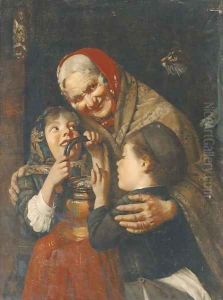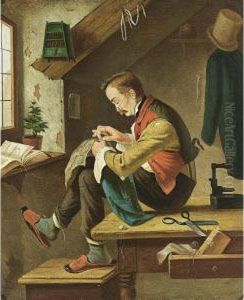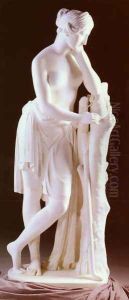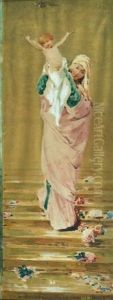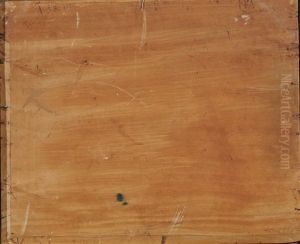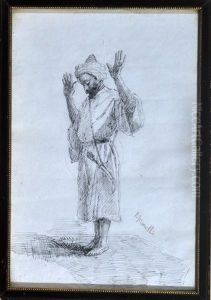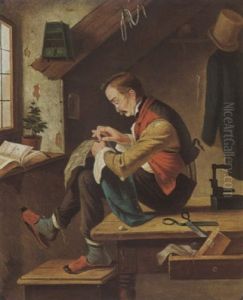Rinaldo Rinaldi Paintings
Rinaldo Rinaldi was an Italian sculptor born in 1793 in Padua, which was then part of the Venetian Republic. He was a prominent figure in the neoclassical movement, which sought to revive the styles and principles of classical art from ancient Greece and Rome. His works are characterized by their classical forms, attention to detail, and adherence to the principles of beauty and harmony that defined neoclassical aesthetics.
Rinaldi began his artistic training at a young age in his hometown before moving to Rome, where he became a student of the famed sculptor Antonio Canova. Canova's influence on Rinaldi was significant, and under his mentorship, Rinaldi honed his skills in sculpture, developing a refinement and elegance in his work that echoed that of his master.
During his career, Rinaldi produced a number of notable sculptures and gained recognition for his artistic talent. He worked on various commissions, including religious and mythological subjects, as well as portraits and funerary monuments. His sculptures were well-received for their expressive detail and the way they captured the human form, and they earned him a reputation as a skilled sculptor of his time.
Rinaldi's works can be found in various churches and public spaces in Italy, as well as in private collections. He was also involved in the restoration of ancient sculptures, a common practice among neoclassical artists who sought to preserve the cultural heritage of the past. Despite the overshadowing fame of his teacher Canova, Rinaldi managed to leave his own mark in the history of Italian sculpture.
Rinaldi passed away in 1873. His legacy is preserved through his contributions to neoclassical sculpture and the works he left behind, which continue to be studied and admired by art historians and enthusiasts. His dedication to the neoclassical style helped to perpetuate the movement's ideals well into the 19th century.
